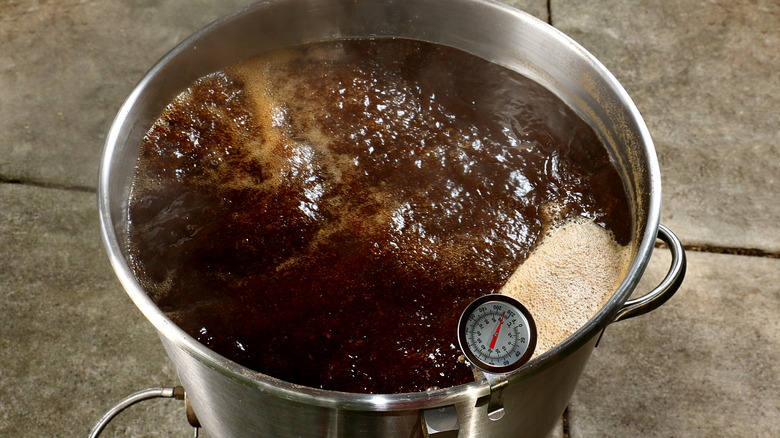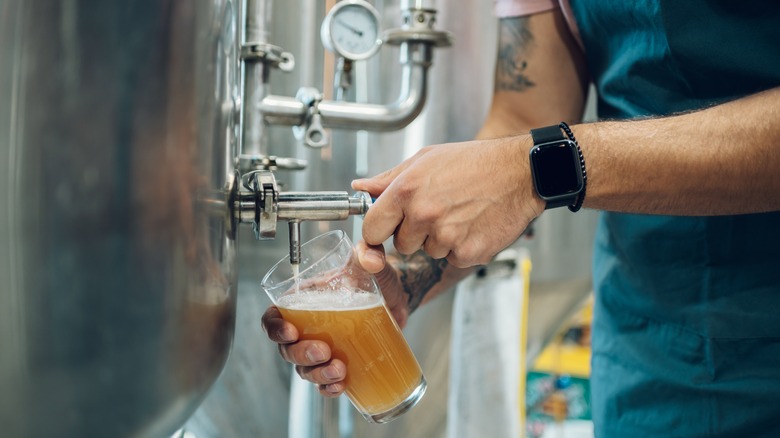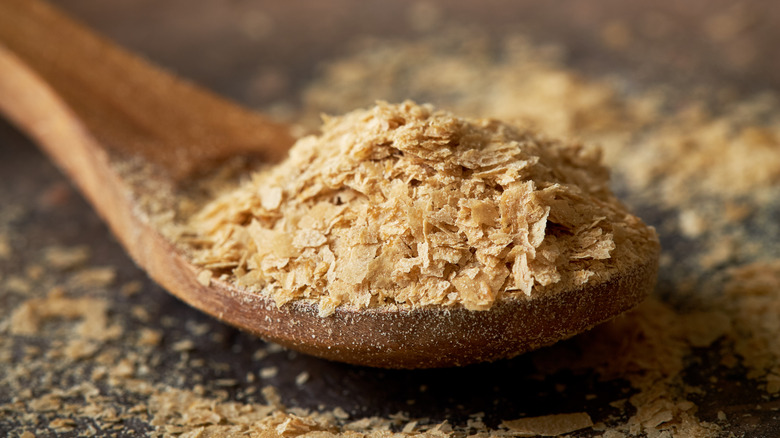Is Liquid Or Dry Yeast Better For Home Brewing?
The time has come. You've mastered the art of home brewing kombucha, maybe tried making your own yogurt, or even pickled a thing or two. Your home fermentation station is positively stacked, and you're ready for a new challenge. There's only one thing left for you to do: give home brewing your own beer a shot.
You've shelled out for dozens of 8 oz glass bottles, made room in a cabinet somewhere for an industrial-sized carboy, and painstakingly selected the particular grains you're going to use for your perfect mash. But there's one last ingredient you just can't seem to make up your mind on — and it is one of the most crucial ingredients — which yeast are you going to choose? Should you use liquid yeast, the standby of the old guard, or take a chance on dry yeast? Deciding for yourself will require weighing a number of pros and cons and deciding what your top priority is when it comes to brewing.
Liquid yeast
Liquid yeast has long been considered the gold standard for brewing and is still widely used by commercial brewers. It is popular because the greatest possible number of living yeast strains can only be accessed in liquid form, and it allows for greater diversity in the finished products.
There are some things to keep in mind when working with liquid yeast, however. Liquid yeast must be kept refrigerated and only has a shelf life of approximately three months. This increases the possibility of damaged yeast products due to refrigeration issues in transit and occasionally means that a yeast starter will be needed to increase their cell count. It is also commonly more expensive than dry yeast.
When using liquid yeast, brewers will also need to aerate their wort before fermentation. Essentially, the liquid that will become beer needs to be flooded with additional oxygen to ensure healthy yeast growth and reproduction. This process is unnecessary for dry yeast.
Dry yeast
Dry yeast is probably something you're familiar with if you've ever baked bread. The yeast you use for baking is actually the same type of fungus as brewer's yeast — called Saccharomyces cerevisiae – though they are different strains and cannot be used interchangeably, mostly due to taste reasons.
Dry yeast is a yeast that has been dehydrated, which gives it a number of benefits. First off, dry yeast is cheaper than liquid yeast and more readily available. Dry yeast also has a much longer shelf life and doesn't need to be stored in the refrigerator. It also doesn't need to be oxygenated, allowing brewers to skip an extra step.
Bison Brew explains that dry yeast used to have a bad reputation because not as many strains are available. Different strains of yeast allow for different levels of customization and flavor possibilities in your finished beer, so dry yeast used to have some limitations for experienced brewers.
But increased availability of dry yeast strains over the past several years has largely reduced this problem, though some strains are still impossible to dry. Factoring this in, Hazy and Hoppy recommend that beginner brewers use dry yeast for its cost and ease of use unless they are trying to replicate a very specific type of beer that requires specialized yeast strains.


